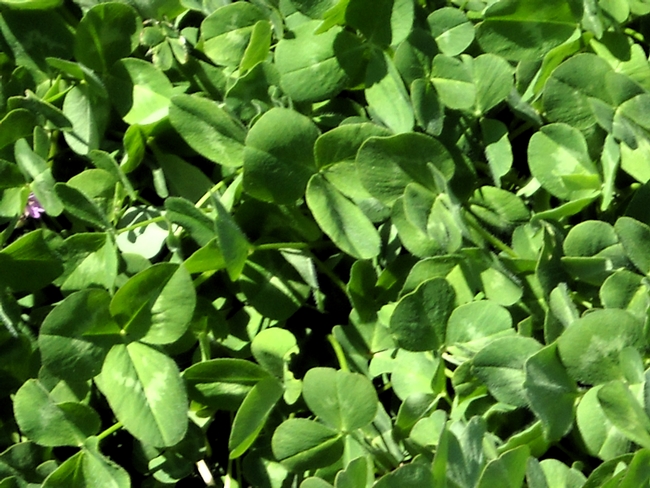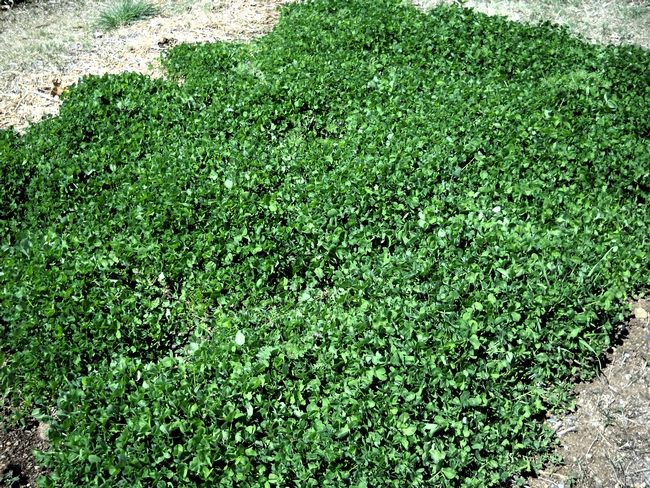I am finally getting around to writing this, ah well. Let me begin by wishing you all a happy height of gardening season! The weeds and the fruit and the veggies and the flowers are keeping me hopping, as I imagine you are. Ah, but the pay-offs are worth it. Now, let me share another bit of garden discovery with great pay-offs: Cover crops. When I first started gardening, I knew nothing about cover crops. As time and experience went by, I learned of this practice, but was convinced (for whatever reason) that this was a large scale agriculture idea, not suitable for a small backyard plot. Then, a couple of years ago, I was somehow motivated to revisit the idea – call it an inspiration or a garden tweet, I don't know. Anyway, my curiosity and research led me to numerous articles on the Internet that assured me this practice is of great value to home gardeners and has been used by many. Surprise, surprise, surprise!
So, let's start at the beginning. A cover crop is planted for the purpose of improving soil quality and nutrition and, perhaps, for attracting beneficial insects. Cover crops improve the quality of soil by adding nitrogen and organic matter, and improving soil tilth and water penetration. One that is planted in the fall and tilled under in the spring is often referred to as “green manure”. This addition of organic matter feeds the soil dwelling fungi and bacteria so they can release nutrients back into the soil. Cover crops also choke out weeds and stabilize the surface of the soil while breaking up and aerating with their deep reaching roots.
I don't remember seeing seed for cover crops in any nursery or seed catalog until recently. Now quiet a few of the better suppliers carry a wide variety. In choosing which cover crop you want to try, you must consider what you are hoping to accomplish. Cereal crops, such as winter rye, will help build organic matter. Addition of nitrogen would call for a legume crop, such as vetch or peas. If you want the best of both worlds, you can choose a seed mix. Just remember, if you choose a legume, you will need to employ an inoculant when you plant. You probably already do that with your sugar snap peas and bush beans, right?
Most home gardeners would want to put in a cover crop for winter. The idea is to reap the benefits without much work. If you plant a winter garden, this might be a drawback. But, if you are not much of a winter gardener, then putting in a cover crop is great for suppressing weeds, and requires minimal watering. Planting is easy. Just prepare the bed, scatter the seed and rake it in, then cover with a mulch of straw. A new planting will need water for germination and to get a good start, then just minimal watering and no additional fertilizer. In the spring, let the crop grow until about a month before you want to plant. Then, weed whack the cover crop and turn it in with a rototiller or spade.
The first year I tried this, I planted winter rye – mostly because I got a late start on the project and didn't get the seed in until late October. This is a hardy grain and did just fine. I did not let the seed heads mature and decided to pull the stalks out rather that turn them into the soil. It turns out that rye is great for keeping the weeds down because it has some allelopathic properties that keep them from growing. Since I was going to plant vegetable seeds in the beds I had covered, I did not want to take a chance that they might react to this residue. All went well.

The takeaway lesson has been that the small investment of time and effort in cover cropping pays huge dividends. My soil was enriched with organic matter, water infiltration and water holding capacity was increased, weeds and soil-borne diseases were suppressed, plant available nitrogen was added and beneficial insects were attracted. In addition, I grew my own mulch and fertilizer. Finally, I am certain my soil, my veggies and the environment all thanked me for this effort.
So, there you go. I encourage you to give this practice a try if it fits your needs. It is inexpensive , low maintenance, and there is plenty of information on the Internet, including charts to help you choose the best cover crop for your needs and your region. Happy gardening to you all!
Resources for cover crop article:
Mother Earth News: Grow Cover Crops for the Best Garden Soil by Harvey Ussery
Mother Earth News: Use Cover Crops to Improve Soil by Barbara Pleasant
Marin Master Gardeners: Cover Crops boost soil in vegetable beds by Marie Narlock
University of California Agriculture and Natural Resources Cooperative Extension Sacramento County: Cover Cropping in Home Vegetable Gardens by Chuck Ingels
Oregon State University Extension Service: Cover Crops for Home Gardens by R.L. Rackham and R. McNeilan
Rodales's Organic Life: Cover Crops
